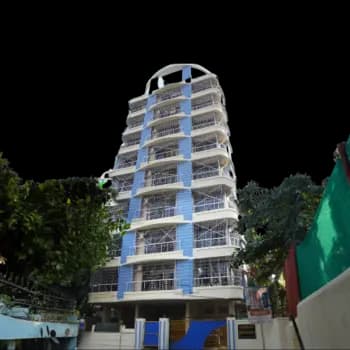Dance Therapy
What Is Dance Therapy?
Dance therapy is one of the most effective creative arts therapies. This therapy supports traditional therapeutic techniques for people suffering from mental health disorders. Also called movement therapy, this therapy treats various mental health disorders and is beneficial for overall mental well-being.
Read on to learn more about dance therapy techniques, the benefits of dance therapy, what dance therapy is used for, and how dance therapy helps.
Types of Dance Therapy
- Authentic Movement: Patients’ movements are guided by impulses. With eyes closed, therapists encourage patients to move with the flow and connect with subconscious emotions. Therapists observe these movements and understand a patient's state of mind.
- Expressive Movement: This dance therapy expresses emotions, thoughts, and experiences through movement. Inhibited feelings are disclosed to foster a deeper connection between mind and body.
- Laban-Based Movement: Rudolf Laban’s framework explores bodily dynamics, space, effort, and shape to help individuals recognise their movement patterns and stress associated.
- Improvised Movement: This spontaneous and unstructured dance routine explores creativity and emotions. Patients expose their authentic selves and release emotions. This ensures personal growth using uninhibited emotions.
- Somatic Movement: This category of dance therapy integrates body awareness with intentional movements to emphasise internal sensations. Patients release tensions and reconnect with their bodies, which is essential for managing anxiety and trauma.
Dance Therapy Techniques
1. Mirrored Movement
In this technique, therapists mirror or copy a patient's actions to build a rapport. This way, an individual builds trust and feels validated, which makes it easier to share emotions and feelings.
2. Circular Formations
Circular formations promote connection and foster a feeling of community by engaging participants in group dances. Unity, cooperation, and shared energy reduce any feeling of isolation and build a support network.
3. Movement Journeys
Movement journeys take patients through a narrative or emotional exploration using symbolic movements. It is a choreographed procedure in which individuals process suppressed emotions from previous traumas to focus on future aspirations.
How Does Dance Therapy Work?
1. Warming Up
Each session begins with relaxing and stretching muscles, as not everyone is used to physical activities. Therapists and patients select a common theme to explore during sessions.
2. General Movement
There are no choreographed movements in this therapy. Therapists work with patients and transition smoothly from warm-up to deeper therapeutic exploration.
3. Focused Movement
At this stage, patients are trained to process emotions through dance movements. Patients vent out or express their emotional states through these self-directed movements.
4. Mindfulness and Proper Breathing
Therapists encourage patients to focus on their breathing patterns and be aware of their physical sensations. The aim is to create a non-verbal experience focused on the present.
5. Cool Down
The session ends with grounding movements that enable the patient to fully process emotions. There is an insightful discussion with the therapist in a structured manner.
Benefits of Dance Therapy
- Dance therapy is an effective and fast way to heal emotionally and relieve stress. Dance therapy is also one of the best outlets for venting out unaddressed trauma.
- Dance therapy also improves the physical health of patients suffering from disorders. Patients often ignore fitness when treatment is going on, so dance therapy proves to be beneficial.
- The mind-body connection gets better once the session is over and seems to get better. This leads to increased self-awareness, which makes expressing repressed emotions simpler.
- Broken social connections get repaired, and new social connections can be made by opting for group dance therapy sessions.
What is Dance Therapy Used For?
Dance therapy has proven to be effective in treating symptoms of mental health disorders. Patients suffering from mild depression can think better after a few sessions. When combined with traditional therapy, people who have anxiety and stress have experienced significant symptom reduction.
How Does Dance Therapy Help?
1. Cathartic Effect
Dance therapy enables individuals to express repressed emotions openly through unrestricted movement. Individuals vent out anger, frustration, and even joy to feel emotions properly. Emotional regulation and self-awareness are promoted.
2. Mind-Body Connection
Bodily sensations and mindful movements create a mind-body connection that gets compromised if a person is suffering from disorders. Dance therapy allows these emotions to be manifested clearly.
3. Stress Reduction
Calming and rhythmic movements soothe the nervous system and have a calming effect. Focused breathing and mindful attention to movement decrease cortisol levels and ensure a uniform heart rate.
4. Confidence Building
Creative movements help an individual build confidence and express their emotions properly. Overcoming challenges in therapy gives patients a sense of accomplishment, which improves their self-esteem.
5. Connection Creation
A sense of mutual understanding is built with dance therapy, as group sessions are a part of it. Sharing movement experiences with people who are suffering builds compassion and strengthens interpersonal communication.







